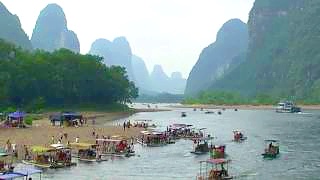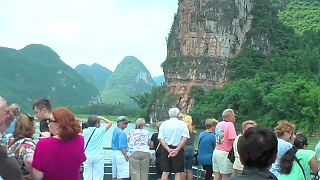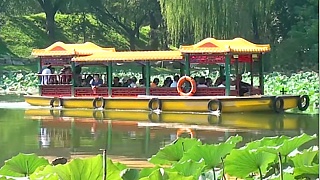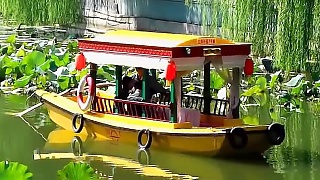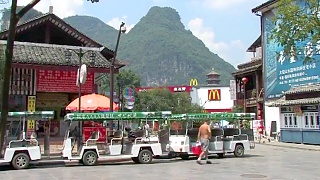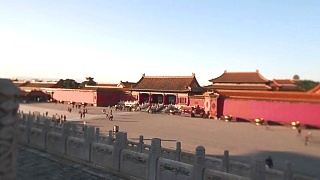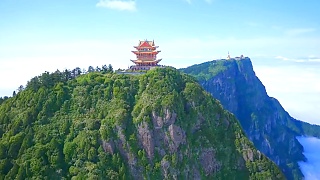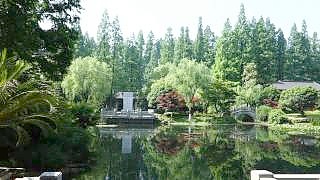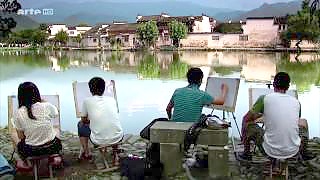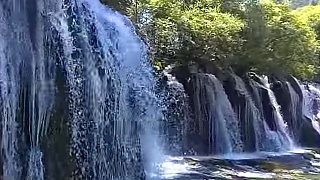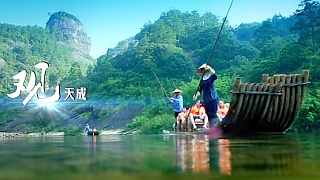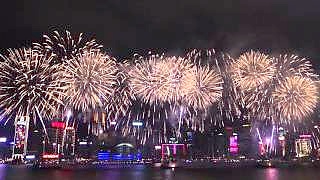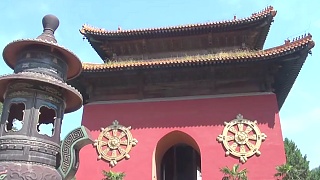
|
With Little Chinese Everywhere ...
Bonus film - Uyghur life in Turpan desert oasis ...
Welcome to Turpan, Oasis of the Gobi Desert
Introduction
Top Attractions
Activities
Local Culture
Local Cuisine
Visitor Tips
Getting There
Introduction
Turpan, also known as Turfan, is a city oasis located in the Gobi Desert of XinJiang, in the Kazakh Autonomous Prefecture. This ancient city is one of the hottest and driest places in China, yet it is renowned for its lush vineyards, ancient ruins, and unique cultural heritage. Turpan is an important stop on the ancient Silk Road and has a rich history that spans thousands of years, with influences from various cultures, including Uyghur, Han Chinese, and Central Asian.
Despite its harsh desert climate, Turpan is famous for its agricultural produce, particularly grapes, thanks to its innovative karez irrigation system. The city is a fascinating blend of ancient history and vibrant local culture, making it a must-visit destination for travelers exploring XinJiang.
Top Attractions
Jiaohe Ancient City
Jiaohe Ancient City, also known as Yarghul, is one of the best-preserved ancient cities in the world. Dating back over 2,000 years, Jiaohe was once a bustling city on the Silk Road. The city is situated on a plateau surrounded by deep valleys, making it a natural fortress. Visitors can explore the ruins of this ancient city, including its well-preserved streets, houses, temples, and administrative buildings. The site offers a fascinating glimpse into the life of a Silk Road city.
Flaming Mountains
The Flaming Mountains are one of the most iconic natural landmarks in Turpan. These red sandstone mountains are named for the intense heat they radiate, especially during the summer months, when the surface temperatures can soar above 70°C (158°F). The mountains appear to be ablaze, particularly at sunset, when they glow in various shades of red and orange. The Flaming Mountains are steeped in legend and have been immortalized in the classic Chinese novel "Journey to the West."
Bezeklik Thousand Buddha Caves
The Bezeklik Thousand Buddha Caves are a series of cave temples carved into the cliffs of the Mutou Valley. These caves date back to the 5th to 14th centuries and contain exquisite murals that depict scenes from Buddhist scriptures and the daily life of the time. The caves are a testament to the spread of Buddhism along the Silk Road and offer insight into the cultural and religious exchanges that took place in this region.
Grape Valley
Grape Valley is a lush oasis in the heart of the desert, famous for its vineyards and production of sweet Turpan grapes. The valley is a refreshing contrast to the surrounding desert and offers a peaceful retreat with its shady vineyards, running streams, and traditional Uyghur houses. Visitors can stroll through the vineyards, taste fresh grapes and raisins, and learn about the traditional methods of grape cultivation and drying.
Karez Irrigation System
The Karez Irrigation System is an ancient engineering marvel that has been vital to the survival of Turpan's agriculture in the arid desert environment. This underground network of channels, wells, and tunnels brings water from the distant Tianshan Mountains to the city, allowing the cultivation of crops in the desert. Visitors can explore the Karez Museum to learn about the history and operation of this ingenious system and see how it has sustained life in Turpan for centuries.
Activities
Exploring Ancient Ruins: Discover the rich history of Turpan by exploring ancient sites such as Jiaohe Ancient City and the Bezeklik Thousand Buddha Caves. These sites offer a fascinating insight into the city's past and the cultures that have influenced it.
Vineyard Tours: Take a guided tour of the vineyards in Grape Valley, where you can learn about grape cultivation, taste fresh produce, and enjoy the serene beauty of this desert oasis.
Hiking in the Flaming Mountains: For those who enjoy the outdoors, hiking in the Flaming Mountains offers an opportunity to experience the dramatic landscape up close. Early morning or late afternoon hikes are recommended to avoid the intense heat.
Cultural Experiences: Immerse yourself in the local culture by visiting traditional Uyghur villages, attending local festivals, or enjoying performances of Uyghur music and dance.
Museum Visits: Visit local museums such as the Turpan Museum and the Karez Museum to gain a deeper understanding of the region's history, culture, and technological achievements.
Local Culture
Turpan is a melting pot of cultures, with significant influences from Uyghur, Han Chinese, and Central Asian traditions. The Uyghur people, who are the dominant ethnic group in the region, have a rich cultural heritage that is reflected in their language, music, dance, and cuisine.
Uyghur music and dance are vibrant and expressive, often featuring lively rhythms, stringed instruments like the dutar, and intricate dance movements. Traditional Uyghur dances are a highlight of local festivals and celebrations, where people gather to perform and enjoy these cultural expressions.
The local architecture is also distinctive, with traditional Uyghur houses often featuring courtyards, intricate wooden carvings, and grape trellises providing shade in the hot desert climate. Visitors to Turpan can explore these traditional homes and learn about the customs and daily life of the Uyghur people.
Local Cuisine
Turpan is renowned for its delicious Uyghur cuisine, which features a variety of flavorful dishes that reflect the region's agricultural abundance and cultural diversity. Some must-try dishes include:
Polo (Uyghur Pilaf): A traditional Uyghur dish made with rice, lamb, carrots, and spices, often served with raisins or other dried fruits. Polo is a staple of Uyghur cuisine and is enjoyed on special occasions and everyday meals alike.
Kebabs: Grilled lamb skewers seasoned with a blend of spices and often served with flatbread. Kebabs are a popular street food in Turpan and are a must-try for meat lovers.
Nan: Uyghur flatbread, known as nan, is a common accompaniment to many meals. It is often baked in a traditional tandoor oven and can be served plain or topped with sesame seeds.
Grape Dishes: Given Turpan's fame for its grapes, you'll find many dishes that incorporate this fruit, including grape juice, grape syrup, and dishes featuring dried grapes (raisins).
Lagman: A hand-pulled noodle dish typically served with a stir-fry of meat and vegetables. Lagman is a hearty and flavorful dish that showcases the culinary skills of the Uyghur people.
Visitor Tips
Best Time to Visit: The best time to visit Turpan is during the spring (April to June) and autumn (September to October) when the weather is milder and more comfortable for outdoor activities. Summers can be extremely hot, with temperatures often exceeding 40°C (104°F).
Hydration: Given the extreme heat and arid climate, it's essential to stay hydrated while exploring Turpan. Always carry plenty of water with you and take breaks in the shade to avoid heat exhaustion.
Clothing: Lightweight, breathable clothing is recommended, along with a wide-brimmed hat and sunglasses to protect against the strong sun. In the cooler months, bring layers as temperatures can drop significantly at night.
Respect Local Customs: Turpan has a diverse cultural heritage, so it's important to be respectful of local customs, particularly when visiting religious sites or interacting with the Uyghur community.
Safety: Stay on designated paths when exploring ancient sites and natural attractions. The terrain can be rugged, and temperatures can be extreme, so caution is advised.
Getting There
Turpan is located in the eastern part of XinJiang, and there are several options for getting there:
By Air: The nearest airport is Turpan Jiaohe Airport, which has flights to and from major cities such as Urumqi, Beijing, and Shanghai. From the airport, you can take a taxi or bus to the city center.
By Train: Turpan is well-connected by rail, with the Turpan North Railway Station serving as a major stop on the Lanzhou-XinJiang High-Speed Railway. Trains from Urumqi, Lanzhou, and other major cities offer convenient access to Turpan.
By Bus: Long-distance buses operate from Urumqi and other nearby cities to Turpan. The bus ride offers scenic views of the desert and mountains along the way.
By Car: If you prefer to drive, Turpan is accessible via highways from Urumqi and other parts of XinJiang. The drive offers a unique opportunity to experience the vast landscapes of the Gobi Desert.
|

 West Lake 西湖 boat trip, HangZhou 杭州
West Lake 西湖 boat trip, HangZhou 杭州